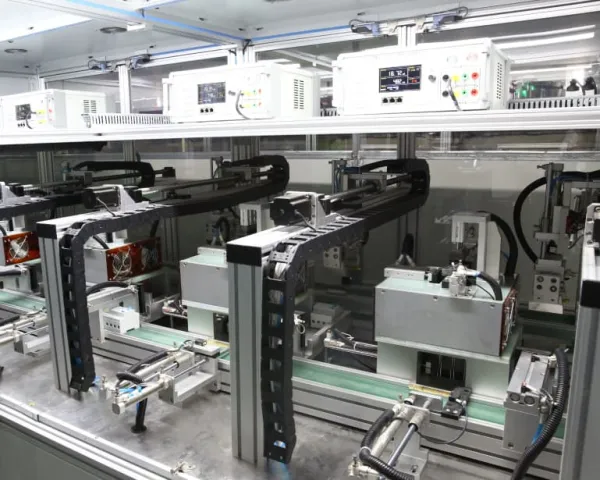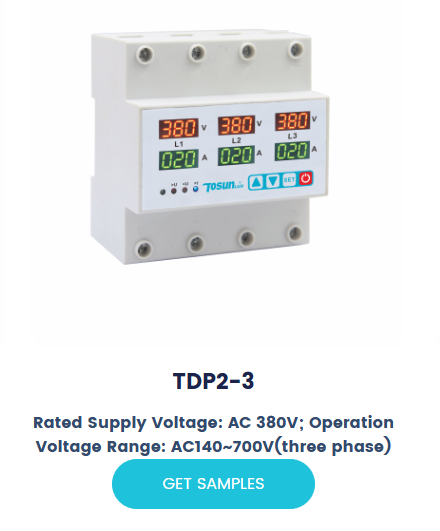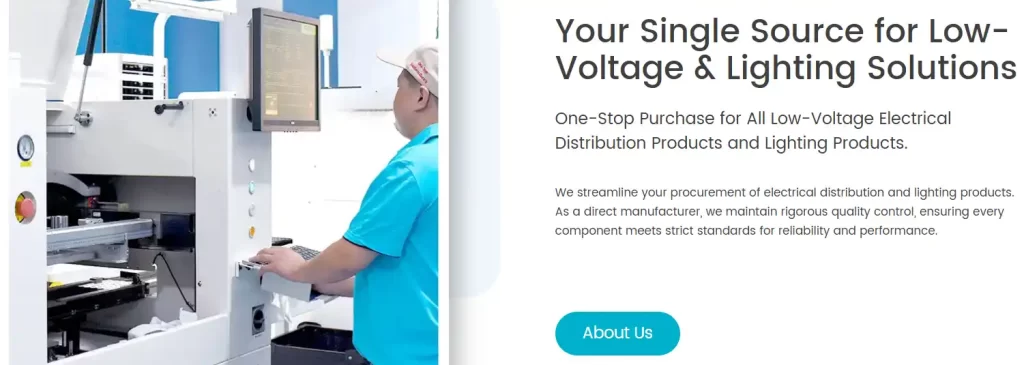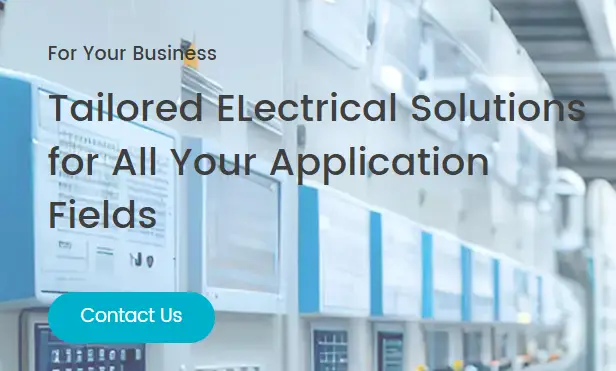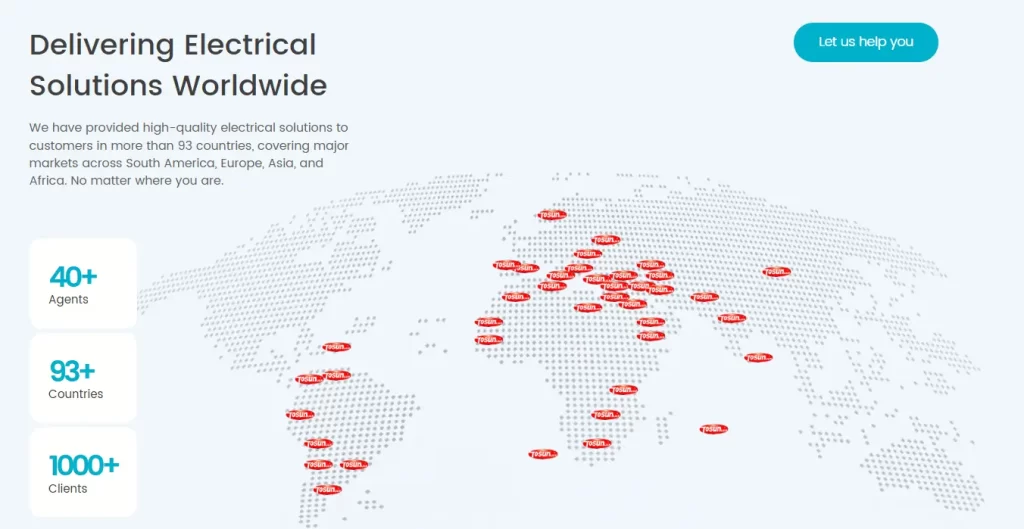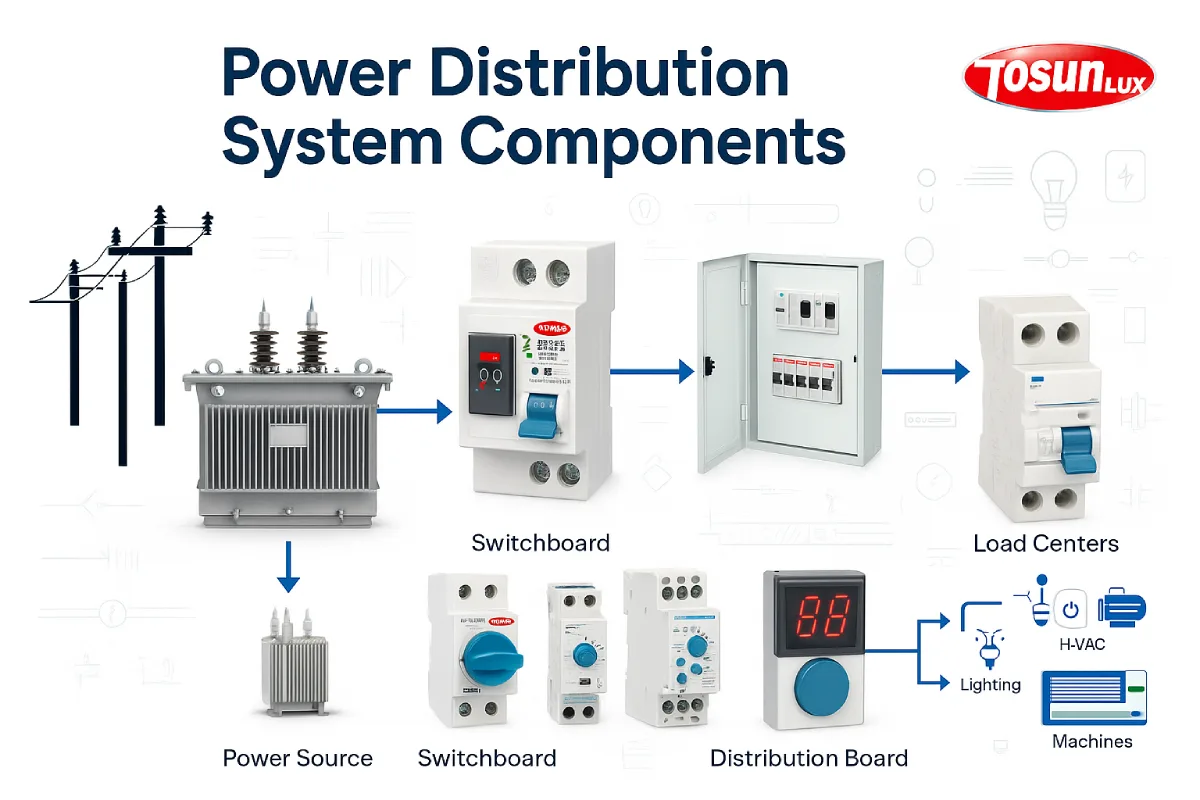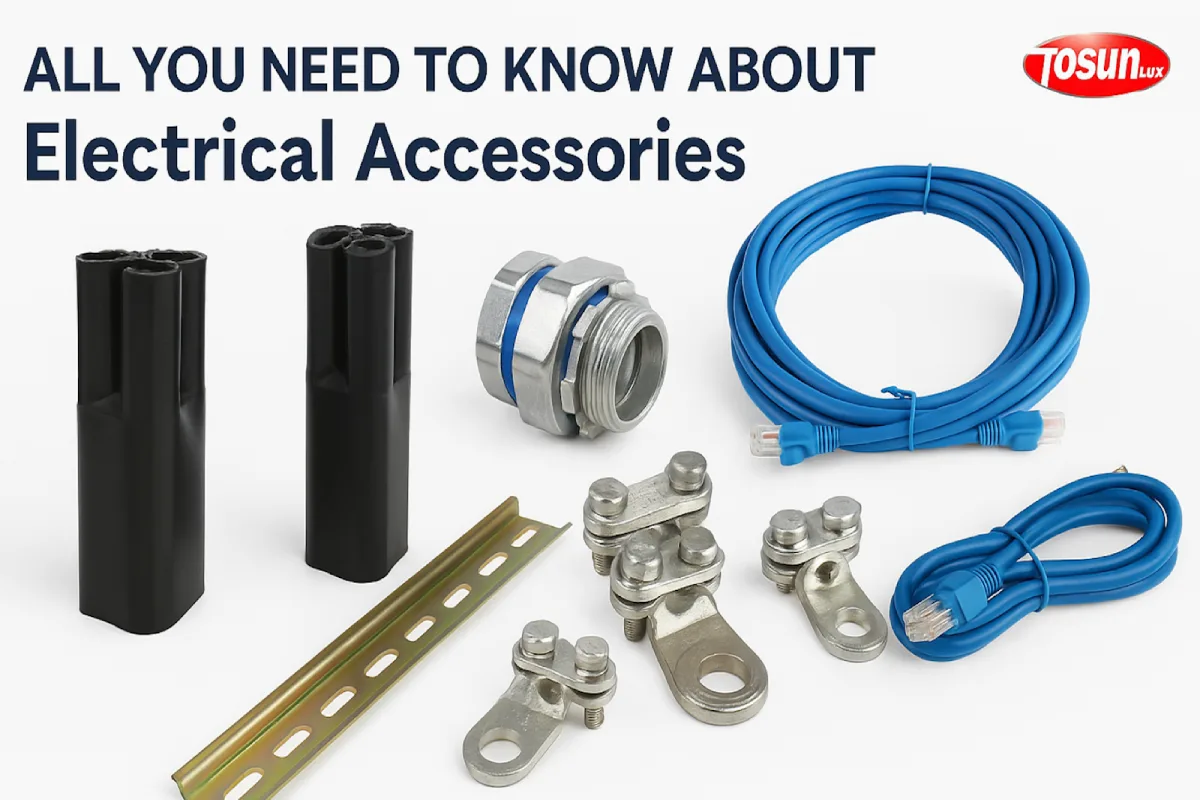La guida definitiva ai protettori di tensione trifase
Indice dei contenuti
Attiva/disattivaSe le tue attività si basano su macchinari pesanti, motori o componenti elettronici sensibili alimentati da un'alimentazione trifase, allora un protettore di tensione trifase è essenziale.
Fluttuazioni di tensione, perdita di fase e sovratensione possono danneggiare le macchine, innescare tempi di fermo e rovinare i sistemi critici. Questi dispositivi di protezione sono progettati per interrompere automaticamente l'alimentazione in caso di problemi e ricollegarla quando tutto è di nuovo sicuro.
In questa guida, ti guideremo attraverso il funzionamento dei dispositivi di protezione da sovratensione trifase, come si confrontano con i dispositivi di protezione da sovratensione monofase, cosa cercare e perché un dispositivo di protezione da sovratensione per impieghi gravosi può fare la differenza tra un funzionamento regolare e un guasto costoso.
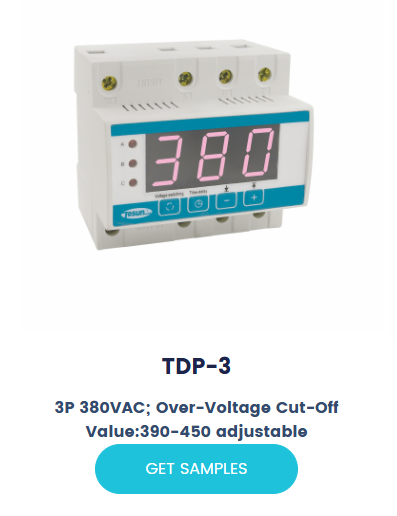
Che cosa è un protettore di tensione trifase?
UN Protettore di tensione trifase Monitora la tensione su tutte e tre le fasi di un alimentatore. Se la tensione diventa troppo alta, troppo bassa, o se una delle tre fasi si sbilancia o si guasta completamente, il dispositivo scollega automaticamente l'alimentatore per evitare danni. Una volta che i livelli di tensione tornano alla normalità, ricollega l'alimentazione, in modo automatico e sicuro.
Questo è diverso da un protettore di tensione monofase, che monitora solo una linea attiva e una neutra. Le unità monofase sono comuni nelle case e nei piccoli uffici. Ma nelle fabbriche, nei data center e nei grandi edifici dove la domanda di energia è maggiore, i sistemi trifase sono la norma, così come la protezione trifase.
Perché è importante nelle operazioni reali
I sistemi trifase alimentano motori di grandi dimensioni, ascensori, unità di raffreddamento e linee di produzione. Queste configurazioni sono più efficienti per le operazioni ad alto carico, ma sono anche più vulnerabili a:
- Perdita di fase, quando una linea si guasta e provoca il surriscaldamento dei motori.
- squilibrio di tensione, che può degradare silenziosamente i macchinari.
- Eventi di sovratensione, in particolare durante le fluttuazioni della rete elettrica o la commutazione del generatore.
UN protettore di tensione trifase Controlla costantemente ogni linea e reagisce immediatamente ai problemi. Previene tempi di fermo, danni alle apparecchiature e persino rischi di incendio.
In luoghi con reti instabili o carichi di commutazione elevati, affidarsi a controlli manuali o a una protezione ritardata non è sufficiente.
Principali vantaggi dell'utilizzo di un protettore di tensione trifase
Ecco cosa offrono questi dispositivi, oltre a spegnere tutto quando manca la corrente:
- Monitoraggio completo: Tiene traccia dei livelli di tensione su tutte e tre le linee e controlla la sequenza di fase e i guasti di fase.
- Spegnimento e ripristino automatici: Interrompe immediatamente l'alimentazione in caso di guasti e la ripristina quando le condizioni sono sicure.
- Soglie personalizzabili: Molti dispositivi di protezione, compresi i modelli TOSUNlux, consentono di impostare autonomamente i limiti di sovratensione e sottotensione.
- Protegge le attrezzature di valore: Previene danni a motori, azionamenti, unità HVAC e altri dispositivi industriali.
UN protettore da sovratensione per impieghi gravosi è particolarmente utile per i sistemi ad alto carico che non possono permettersi picchi o cali, nemmeno brevi.
Protettore di tensione trifase vs monofase: qual è la differenza?
A prima vista, entrambi i dispositivi mirano a proteggere le apparecchiature elettriche da tensioni pericolose. Ma sono progettati per configurazioni molto diverse.
UN Protettore di tensione trifase È progettato per sistemi che utilizzano tre fili attivi (fasi) e talvolta un neutro. Sono standard negli impianti industriali e commerciali, dove le apparecchiature di grandi dimensioni funzionano in modo più efficiente con l'alimentazione trifase.
UN protettore di tensione monofase, d'altra parte, monitora solo un filo attivo e uno neutro. Viene tipicamente utilizzato in contesti residenziali o piccoli uffici.
Differenze principali:
| Caratteristica | Protettore trifase | Protettore monofase |
| Linee monitorate | Trifase (L1, L2, L3 + N opzionale) | Monofase (L + N) |
| Tensione tipica | 380–480 V | 120–240 V |
| Applicazioni | Fabbriche, motori, HVAC, ascensori | Case, piccola elettronica |
| Rischi comuni | Perdita di fase, squilibrio, sovratensione | Sovratensioni, cali di tensione |
Se si desidera proteggere dispositivi come motori, compressori o sistemi automatizzati trifase, un dispositivo monofase non sarà sufficiente.
Cosa aspettarsi da un protettore da sovratensione per impieghi gravosi
I protettori standard vanno bene per piccoli carichi. Ma se si ha a che fare con macchinari, infrastrutture dati o quadri elettrici ad alta capacità, è necessario qualcosa di più robusto: un protettore da sovratensione per impieghi gravosi.
Queste unità sono costruite per gestire:
- Correnti più elevate senza surriscaldarsi.
- Frequenti fluttuazioni di potenza senza consumarsi.
- Condizioni esterne o industriali, tra cui polvere, calore o vibrazioni.
Cerca caratteristiche come:
- Elevata capacità di amperaggio (da 80 A a 100 A e oltre)
- Involucri in metallo o plastica di alta qualità
- Rilevamento di mancanza di fase e di fase inversa
- Impostazioni di sgancio per sovra/sottotensione con timer di ritardo
Modelli avanzati, come quelli di TOSUNlux, vengono anche con display digitali, soglie di tensione regolabili e funzioni di reset automatico. Non si tratta di fronzoli: ti offrono visibilità e controllo, soprattutto in ambienti dinamici.
Protettore di tensione trifase TOSUNlux: protezione intelligente per carichi impegnativi
I protettori trifase TOSUNlux sono progettati per uso industriale. Ecco cosa li distingue:
- Monitoraggio digitale in tempo reale: Il display LCD mostra i livelli di tensione per fase, così puoi sapere esattamente cosa sta succedendo a colpo d'occhio.
- Punti di viaggio personalizzabili: È possibile impostare i livelli esatti di sovratensione e sottotensione, insieme ai tempi di ritardo per la riconnessione.
- Tempo di risposta rapido: Interrompe l'alimentazione prima che si verifichino danni e la ripristina solo quando tutte e tre le fasi sono tornate alla normalità.
- Design compatto: Si adatta perfettamente ai moderni pannelli di controllo.
- Prestazioni stabili in ambienti difficili: Costruito per durare, anche in ambienti molto polverosi o con forti vibrazioni.
Con un Protettore di tensione trifase TOSUNlux, non stai tirando a indovinare: hai il controllo.
Cosa cercare quando si sceglie un protettore di tensione trifase
Non acquistare solo in base al prezzo. Scegli in base alla protezione di cui hai effettivamente bisogno. Ecco come fare la scelta giusta:
- Conosci la tensione del tuo sistema: La maggior parte degli impianti commerciali funziona a 380 V o 400 V. Negli Stati Uniti, potresti avere a che fare con sistemi trifase a 480 V.
- Corrisponde alla tua valutazione attuale: Ad esempio: piccole macchine: 40 A–63 A, quadri medi: 80 A, grandi usi industriali: 100 A o più.
- Dai priorità a queste caratteristiche:
- Display digitale (aiuta nella diagnosi in tempo reale), limiti di interruzione regolabili
- Timer di ritardo (evita falsi viaggi)
- Rilevamento della sequenza di fase (protegge i motori)
- Riconnessione automatica
- Cerca la qualità costruttiva: Verificate la certificazione CE, RoHS o UL. Un involucro robusto, un'etichettatura chiara dei terminali e un design compatto sono altri segni di un prodotto progettato per un'affidabilità a lungo termine.
Best practice per l'installazione
Anche la migliore protezione non sarà d'aiuto se installata male. Ecco alcuni consigli rapidi:
- Installarlo a monte di carichi sensibili, idealmente nel quadro principale o nel quadro secondario.
- Stabilire soglie ragionevoliAd esempio, sovratensione a 460 V e sottotensione a 300 V (o in base alla tua alimentazione).
- Non dimenticare la protezione contro le sovratensioniUn dispositivo di protezione da sovratensioni (SPD) a monte gestirà i picchi transitori, mentre il dispositivo di protezione da sovratensioni gestirà i problemi di alimentazione in corso.
- Testarlo periodicamenteAttivare una condizione di errore per assicurarsi che il dispositivo interrompa e ripristini l'alimentazione correttamente.
Per TOSUNlux unità, il processo di installazione è semplice e solitamente il montaggio avviene tramite guida DIN, risparmiando tempo e spazio sul pannello.
Proteggi i tuoi beni con gli avanzati dispositivi di protezione da sovratensione trifase di TOSUNlux. Ottieni la giusta protezione oggi stesso, prima che si verifichino danni. Mettiti in contatto con noi!
Tel: +86-577-88671000
E-mail: ceo@tosun.com
Skype: tosunelectric
WeChat: +86-139 6881 9286
WhatsApp: +86-139 0587 7291
Indirizzo: Stanza n. 1001 Wenzhou Fortune Center, Station Road, Wenzhou, Cina
RICHIEDI UN PREVENTIVO
Mandaci un messaggio su WhatsApp
 : +86-139 0587 7291
: +86-139 0587 7291 Inglese
Inglese Spagnolo
Spagnolo Russo
Russo Francese
Francese arabo
arabo Portoghese del Brasile
Portoghese del Brasile Ucraino
Ucraino Turco
Turco Polacco
Polacco Paesi Bassi
Paesi Bassi Italiano
Italiano Bahasa Indonesia
Bahasa Indonesia Hindi
Hindi اردو
اردو sfacciato
sfacciato Հայերեն
Հայերեն ไทย
ไทย Mongolo
Mongolo Fascino
Fascino Squalo
Squalo Ellenico
Ellenico
